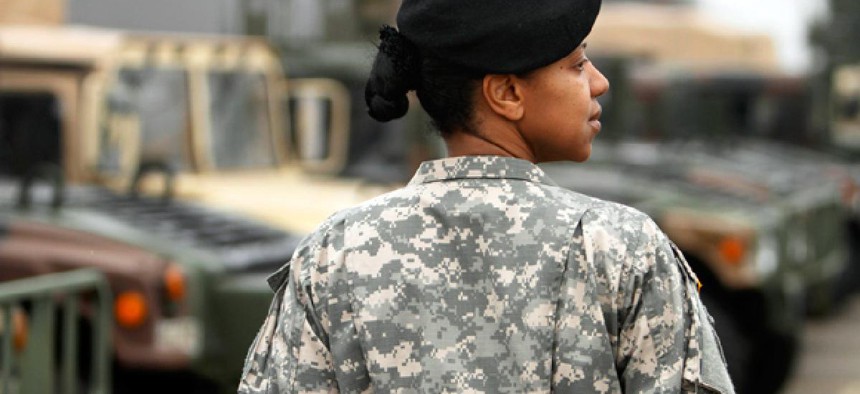
Jacquelyn Martin/AP
Women in combat: An idea whose time has come, aided by technology
Many of the arguments against "bands of sisters" are moot. In part because of improved tools.
"Women," Time magazine wrote last year, "are not small men."
This is ... true. And yet for a long time, the military -- an organization that operates under the core auspices of pragmatic conformity -- sort of ignored its truth. Martial technologies -- uniforms, weapons, vehicles -- have tended to be one-size-fits-all, or at least one-size-fits-dudes. Guns are huge and heavy. Packs the same. Body armor is long and narrow, designed for a guy's long-and-narrow frame. And with good reason, of course: It is both unsurprising and quite practical that an institution headed mostly by men, populated mostly by men, would take a male-centered approach to its equipment. Tall, heavy, narrow, straight: the tools, for the most part, matched the humans who were using them.
That has been changing, however -- and changing long before this week. The Pentagon'sdecision to end its ban on women-in-combat -- a change announced, formally, this afternoon -- is simply a decision whose time, in many, many ways, has come. But it is also, importantly, a decision that technological advances have made easier: more sensible, more practical, more impermeable to objection. While some will still make social and cultural arguments against women serving on the front lines -- most of which will boil down to the idea that it's hard for "bands of brothers" to coalesce when sisters are part of the equation -- many other objections are now, or will soon be, preempted.






